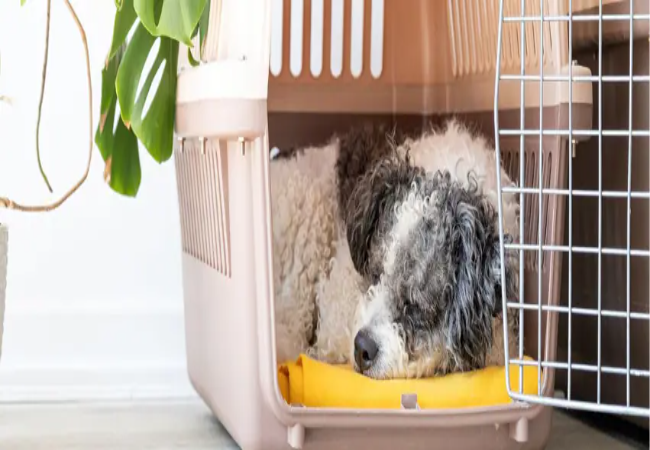Crate Training a Puppy 2025: Vet Tips for Sleep, Safety & Success 🐶✨

In this article
Crate Training a Puppy 2025: Vet Tips for Sleep, Safety & Success 🐶✨
By Dr. Duncan Houston BVSc
Done right, a crate becomes your puppy’s safe haven—not a punishment. It helps with toilet training, prevents destructive behavior, and builds independence. But crate training takes patience, consistency, and the right setup.
I’m Dr. Duncan Houston, veterinarian and founder of Ask A Vet. Here’s a vet-backed guide to crate training your puppy the gentle, effective way—from day one to sleeping through the night.
🐶 Why Crate Train?
- Helps toilet training by teaching bladder control
- Keeps your puppy safe when unsupervised
- Reduces separation anxiety when used properly
- Prepares dogs for travel or boarding
📏 Choosing the Right Crate
- The crate should be just big enough for your puppy to stand up, turn around, and lie down
- Use dividers for large breed puppies to prevent toileting in crate corners
- Wire, plastic, and soft-sided crates all work—choose based on behavior and space
🏠 Setting Up the Crate
- Place the crate in a quiet but social area (not isolation)
- Line with a comfy bed, blanket, or towel
- Leave the door open initially and toss treats inside
- Add safe chew toys or a puppy-safe Kong for positive association
🐾 Step-by-Step Crate Training Plan
Step 1: Introduce the Crate
- Feed meals near or inside the crate
- Toss treats and toys inside—let the puppy explore on their own
Step 2: Short Sessions
- Start with 5–10 minutes with the door closed while you’re nearby
- Gradually increase to 30+ minutes with you out of sight
Step 3: Crate for Naps and Nighttime
- Use a crate for scheduled naps and bedtime
- Place crate near your bed initially to reduce whining
Step 4: Stay Consistent
- Crate during quiet times, not just when leaving the house
- Make the crate a routine part of the day—not a punishment
🕒 How Long Can a Puppy Stay in the Crate?
- Rule of thumb: Puppy age in months = max hours between toilet breaks
- 8-week-old = 2 hours, 12-week-old = 3 hours, etc.
- Never crate for more than 4–5 hours during the day
🛑 Common Mistakes to Avoid
- Using the crate as punishment
- Leaving the puppy crated too long without breaks
- Letting them out while crying (reinforces the behavior)
- Rushing the process—go at your puppy’s pace
💤 What About Crying at Night?
- Try placing the crate near your bed at first
- Offer a warm blanket or soft heartbeat toy
- Do not ignore all crying puppies—puppies may need a toilet break
🔗 Helpful Tools from Ask A Vet
- Ask A Vet – Get personalized support if your puppy struggles with crate training or nighttime issues
📋 Summary Excerpt
Crate training doesn’t have to be stressful. A vet explains the step-by-step method to help your puppy feel safe, sleep well, and grow into a calm, confident dog.
❓ FAQs
-
Q: Should I crate my puppy during the day?
A: Yes—but in short, positive intervals with plenty of breaks, toys, and interaction. -
Q: My puppy cries in the crate—should I let them out?
A: Only if it’s for a toilet break. Otherwise, wait for calm before opening the door to avoid reinforcing crying. -
Q: Can I crate train an older dog?
A: Absolutely. The same principles apply—just go slowly and use positive reinforcement.






